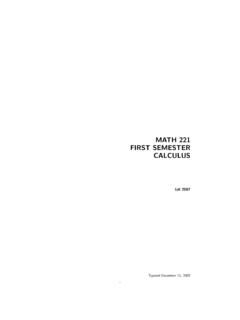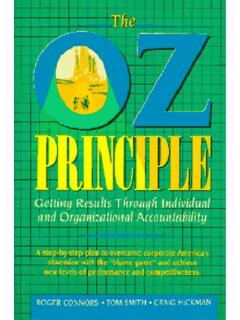Transcription of Feature Pyramid Networks for Object Detection - arXiv
1 Feature Pyramid Networks for Object Detection Tsung-Yi Lin1,2 , Piotr Dolla r1 , Ross Girshick1 , Kaiming He1 , Bharath Hariharan1 , and Serge Belongie2. 1. Facebook AI Research (FAIR). 2. Cornell University and Cornell Tech [ ] 19 Apr 2017. Abstract predict predict predict predict Feature pyramids are a basic component in recognition systems for detecting objects at different scales. But recent predict deep learning Object detectors have avoided Pyramid rep- (a) Featurized image Pyramid (b) Single Feature map resentations, in part because they are compute and memory intensive. In this paper, we exploit the inherent multi-scale, predict predict pyramidal hierarchy of deep convolutional Networks to con- predict predict struct Feature pyramids with marginal extra cost.
2 A top- predict predict down architecture with lateral connections is developed for building high-level semantic Feature maps at all scales. This (c) Pyramidal Feature hierarchy (d) Feature Pyramid network architecture, called a Feature Pyramid network (FPN), shows significant improvement as a generic Feature extrac- Figure 1. (a) Using an image Pyramid to build a Feature Pyramid . Features are computed on each of the image scales independently, tor in several applications. Using FPN in a basic Faster which is slow. (b) Recent Detection systems have opted to use R-CNN system, our method achieves state-of-the-art single- only single scale features for faster Detection . (c) An alternative is model results on the COCO Detection benchmark without to reuse the pyramidal Feature hierarchy computed by a ConvNet bells and whistles, surpassing all existing single-model en- as if it were a featurized image Pyramid .
3 (d) Our proposed Feature tries including those from the COCO 2016 challenge win- Pyramid network (FPN) is fast like (b) and (c), but more accurate. ners. In addition, our method can run at 6 FPS on a GPU In this figure, Feature maps are indicate by blue outlines and thicker and thus is a practical and accurate solution to multi-scale outlines denote semantically stronger features. Object Detection . Code will be made publicly available. largely been replaced with features computed by deep con- 1. Introduction volutional Networks (ConvNets) [19, 20]. Aside from being capable of representing higher-level semantics, ConvNets Recognizing objects at vastly different scales is a fun- are also more robust to variance in scale and thus facilitate damental challenge in computer vision.
4 Feature pyramids recognition from features computed on a single input scale built upon image pyramids (for short we call these featur- [15, 11, 29] (Fig. 1(b)). But even with this robustness, pyra- ized image pyramids) form the basis of a standard solution mids are still needed to get the most accurate results. All re- [1] (Fig. 1(a)). These pyramids are scale-invariant in the cent top entries in the ImageNet [33] and COCO [21] detec- sense that an Object 's scale change is offset by shifting its tion challenges use multi-scale testing on featurized image level in the Pyramid . Intuitively, this property enables a pyramids ( , [16, 35]). The principle advantage of fea- model to detect objects across a large range of scales by turizing each level of an image Pyramid is that it produces scanning the model over both positions and Pyramid levels.
5 A multi-scale Feature representation in which all levels are Featurized image pyramids were heavily used in the semantically strong, including the high-resolution levels. era of hand-engineered features [5, 25]. They were so Nevertheless, featurizing each level of an image pyra- critical that Object detectors like DPM [7] required dense mid has obvious limitations. Inference time increases con- scale sampling to achieve good results ( , 10 scales per siderably ( , by four times [11]), making this approach octave). For recognition tasks, engineered features have impractical for real applications. Moreover, training deep 1. Networks end-to-end on an image Pyramid is infeasible in terms of memory, and so, if exploited, image pyramids are used only at test time [15, 11, 16, 35], which creates an inconsistency between train/test-time inference.
6 For these predict reasons, Fast and Faster R-CNN [11, 29] opt to not use fea- turized image pyramids under default settings. However, image pyramids are not the only way to com- predict pute a multi-scale Feature representation. A deep ConvNet computes a Feature hierarchy layer by layer, and with sub- predict sampling layers the Feature hierarchy has an inherent multi- predict scale, pyramidal shape. This in- network Feature hierarchy produces Feature maps of different spatial resolutions, but introduces large semantic gaps caused by different depths. Figure 2. Top: a top-down architecture with skip connections, where predictions are made on the finest level ( , [28]). Bottom: The high-resolution maps have low-level features that harm our model that has a similar structure but leverages it as a Feature their representational capacity for Object recognition.
7 Pyramid , with predictions made independently at all levels. The Single Shot Detector (SSD) [22] is one of the first attempts at using a ConvNet's pyramidal Feature hierarchy as if it were a featurized image Pyramid (Fig. 1(c)). Ideally, a basic Faster R-CNN detector [29], surpassing all exist- the SSD-style Pyramid would reuse the multi-scale Feature ing heavily-engineered single-model entries of competition maps from different layers computed in the forward pass winners. In ablation experiments, we find that for bound- and thus come free of cost. But to avoid using low-level ing box proposals, FPN significantly increases the Average features SSD foregoes reusing already computed layers and Recall (AR) by points; for Object Detection , it improves instead builds the Pyramid starting from high up in the net- the COCO-style Average Precision (AP) by points and work ( , conv4 3 of VGG nets [36]) and then by adding PASCAL-style AP by points, over a strong single-scale several new layers.
8 Thus it misses the opportunity to reuse baseline of Faster R-CNN on ResNets [16]. Our method is the higher-resolution maps of the Feature hierarchy. We also easily extended to mask proposals and improves both show that these are important for detecting small objects. instance segmentation AR and speed over state-of-the-art The goal of this paper is to naturally leverage the pyra- methods that heavily depend on image pyramids. midal shape of a ConvNet's Feature hierarchy while cre- In addition, our Pyramid structure can be trained end-to- ating a Feature Pyramid that has strong semantics at all end with all scales and is used consistently at train/test time, scales. To achieve this goal, we rely on an architecture that which would be memory-infeasible using image pyramids.
9 Combines low-resolution, semantically strong features with As a result, FPNs are able to achieve higher accuracy than high-resolution, semantically weak features via a top-down all existing state-of-the-art methods. Moreover, this im- pathway and lateral connections (Fig. 1(d)). The result is provement is achieved without increasing testing time over a Feature Pyramid that has rich semantics at all levels and the single-scale baseline. We believe these advances will is built quickly from a single input image scale. In other facilitate future research and applications. Our code will be words, we show how to create in- network Feature pyramids made publicly available. that can be used to replace featurized image pyramids with- out sacrificing representational power, speed, or memory.
10 2. Related Work Similar architectures adopting top-down and skip con- Hand-engineered features and early neural Networks . nections are popular in recent research [28, 17, 8, 26]. Their SIFT features [25] were originally extracted at scale-space goals are to produce a single high-level Feature map of a fine extrema and used for Feature point matching. HOG fea- resolution on which the predictions are to be made (Fig. 2 tures [5], and later SIFT features as well, were computed top). On the contrary, our method leverages the architecture densely over entire image pyramids. These HOG and SIFT. as a Feature Pyramid where predictions ( , Object detec- pyramids have been used in numerous works for image tions) are independently made on each level (Fig. 2 bottom). classification, Object Detection , human pose estimation, and Our model echoes a featurized image Pyramid , which has more.
![arXiv:0706.3639v1 [cs.AI] 25 Jun 2007](/cache/preview/4/1/3/9/3/1/4/b/thumb-4139314b93ef86b7b4c2d05ebcc88e46.jpg)

![arXiv:1301.3781v3 [cs.CL] 7 Sep 2013](/cache/preview/4/d/5/0/4/3/4/0/thumb-4d504340120163c0bdf3f4678d8d217f.jpg)
![@google.com arXiv:1609.03499v2 [cs.SD] 19 Sep 2016](/cache/preview/c/3/4/9/4/6/9/b/thumb-c349469b499107d21e221f2ac908f8b2.jpg)








